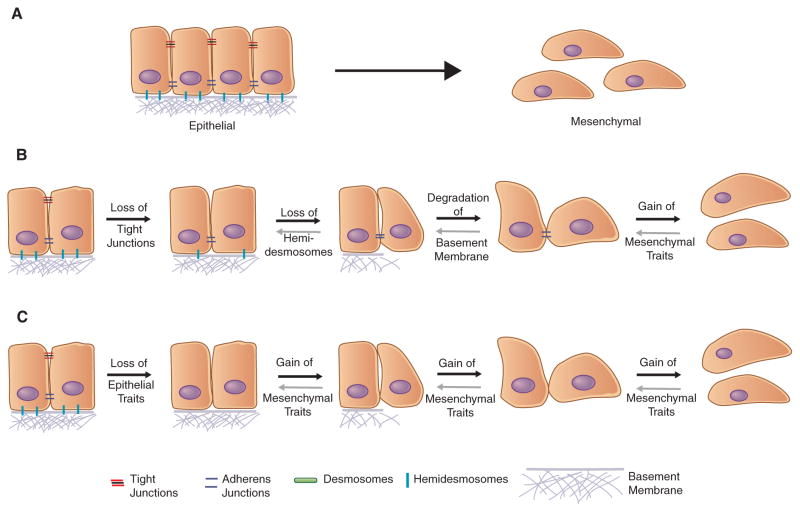Figure 1.
Although we have, in the past, thought of the epithelial-to-mesenchymal transition (EMT) program as a binary switch between two distinct cell states (A), more recent evidence points to the EMT representing a spectrum of different cell states anywhere in between the extreme epithelial and mesenchymal states depending on the state that the cell was originally residing in and the nature of the program that manifests. The sequence of events that defines the EMT is still poorly understood—that is, whether (B) the loss of epithelial traits occurs over multiple steps, with the gain of mesenchymal traits being the final step in the cascade, or if (C) the loss of epithelial traits occurs over a relatively short period of time, followed by a stepwise acquisition of mesenchymal properties.

